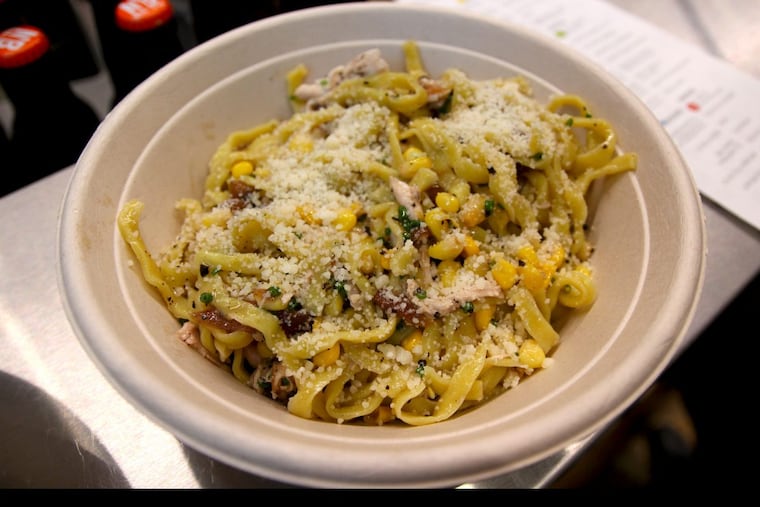Honeygrow spins off a new dining brand, Minigrow
Minigrow has a more streamlined menu and sends customers along an assembly line where their orders are built.

Honeygrow — the fast-expanding stir-fry and salad restaurant chain based in Fishtown — will introduce a second concept this month.
Like Honeygrow, which has opened 20 stores from Chicago to Boston to the Washington, D.C. area over five years, Minigrow is built on the premise of high-quality bowls of noodles or greens served quickly and efficiently.
Two Minigrow locations in Manhattan and one each in Chicago and Boston are due soon, followed by another late this year at 1807 Chestnut St. in Center City Philadelphia, the company said.
Minigrow has a more streamlined menu — 36 ingredients for kitchen workers to prep, as opposed to 89 "mise en place" items at Honeygrow. It also sends customers along an assembly line, where workers complete the orders. It's just like how other fast-casual chains do, creating a perception of greater speed and efficiency. Honeygrow customers enter their order on touchscreens and step away from the counter to await their food.
The most important difference is the kitchen setup, allowing the company more flexibility in choosing locations. "One day a while ago, David [Katz, the culinary director] and I were at the Cherry Hill Whole Foods and we were thinking, 'How can we get into locations that didn't need hoods? Is there a way?' " said founder Justin Rosenberg last week.
Hoods and outside ventilation systems are required for most cooking, including stir-fry wok work at Honeygrow locations. The ducts that direct the kitchen smoke to the roof line are also expensive to install and maintain, especially in the large cities that are Honeygrow's preferred sites.
Katz turned to a combi oven — a variant of a convection oven — requiring only what is known as a Type 2 hood, a much simpler system used for removing heat or steam. There's no need for the so-called black-iron ventilation.
Rosenberg sent Katz to work on developing a streamlined menu that could be executed in the simpler setup and served without the need for frying. He devised a system of bases (wheat and spinach noodles, zucchini "noodles," jasmine rice, spinach, and spring mix), proteins (dashi-poached salmon, pork shoulder, chicken thigh, crab, and marinated tofu), and vegetable toppings (including roasted broccoli, pickled carrots, sesame cucumbers, sweet-and-sour onions, seaweed kimchi, and a seasoned corn named miso corny). None of the cooking requires extensive ventilation.
All of the combinations and garnishes are customized, with one exception.
Katz devised a bowl with three-wheat noodles, roast chicken, sweet-and-sour onions, black truffle, miso corny, chives, and Parmesan that Minigrow calls The Chicken Jawn — "we need to remind people that we're from Philly," Katz said. Substitutions are not permitted on the dish, which is fairly indulgent given the truffle, corn, and cheese.
Minigrow locations could require a space as small as 1,800 square feet, while Honeygrow locations require about 2,500 feet.
Minigrow is not intended as a replacement for the flagship, Rosenberg said. Honeygrow will continue to grow as it has been.